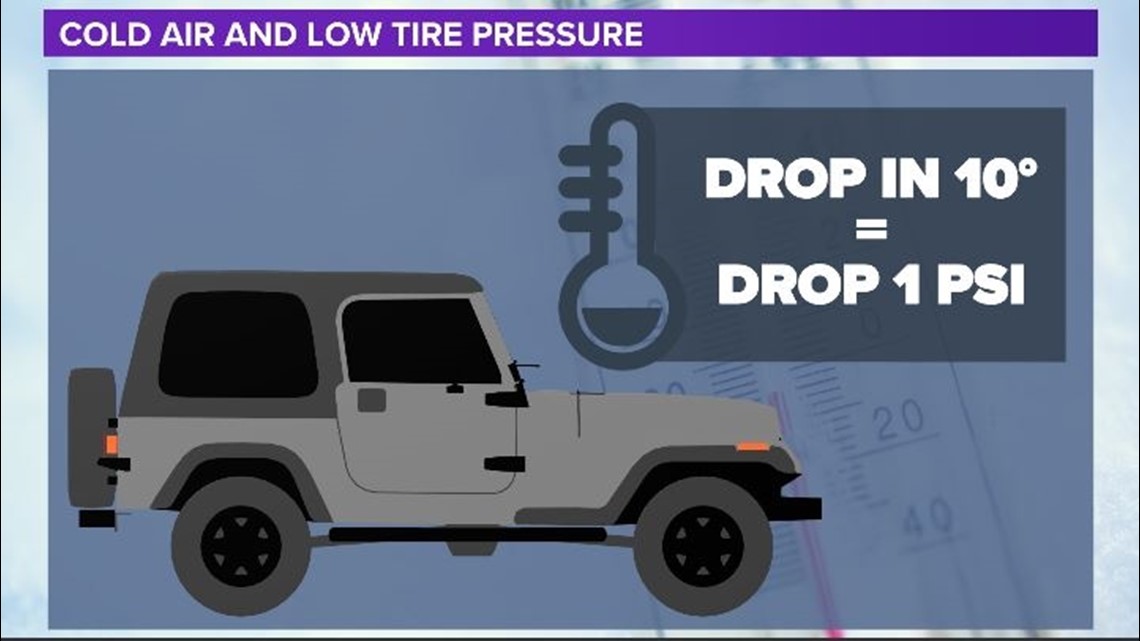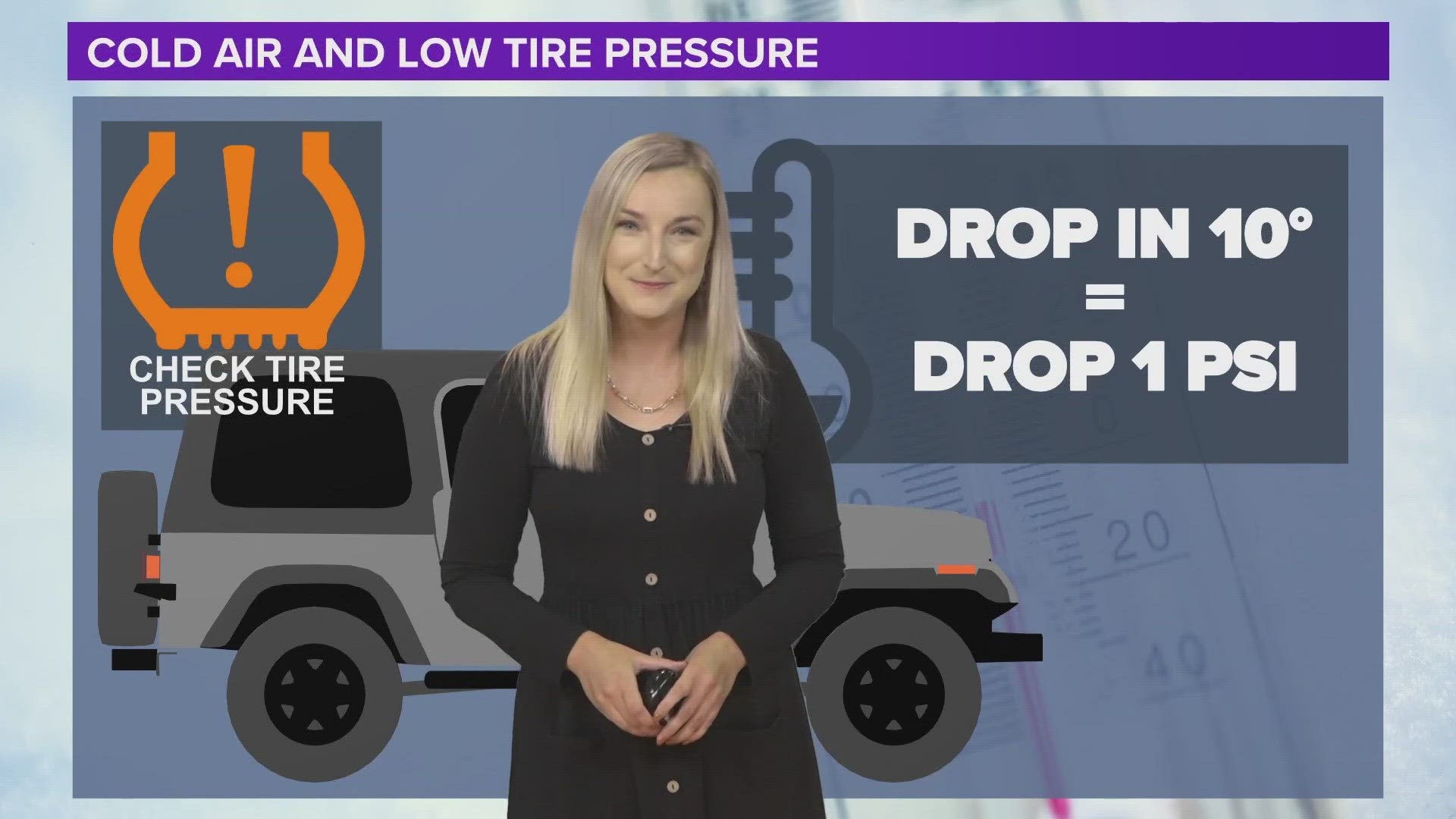JACKSONVILLE, Fla. — Don't be surprised if your tire pressure monitoring system light comes on soon. Temperatures will drop midweek, and so will your tire psi.
For every 10 degree drop in temperature, the tire psi can drop by around 1.
Highs are in the 80s, but lows will soon be in the 40s. That's a loss of around 4 psi, and if your tires were already low, that could make the tire pressure light flash on in the morning.
Why does this happen? In cold weather, molecules in the air move slower. The molecules are closer together and more dense, which doesn't push on the tire as much and causes the pressure to be lower.
In warm air, molecules have more energy and vibrate quickly. They are more spread out and therefore push against the tire, causing higher pressure.


Your tire pressure will increase again as temperatures warm into the weekend, but experts say you shouldn't ignore low tire pressure. To ensure performance and safety, they say tires should be inflated and deflated with the changing temperatures.



